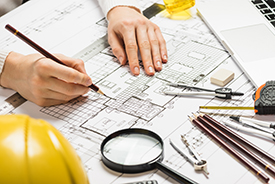Living in an earthquake-prone area requires homeowners to take proactive measures to protect their property and ensure the safety of their loved ones. Seismic retrofitting is a crucial step in fortifying homes against the destructive forces of earthquakes. In this blog, we will delve into the importance of seismic retrofitting, explain the process, and highlight the benefits it brings to your home’s structural integrity and the overall safety of your household.
- Understanding the Need for Seismic Retrofit: Earthquakes can cause severe damage to homes, resulting in structural instability and potential collapse. Seismic retrofitting is designed to reinforce the existing structure, making it more resistant to seismic activity. By strengthening the building’s components, such as the foundation, walls, and connections, homeowners can significantly reduce the risk of structural failure during an earthquake.
- The Process of Seismic Retrofitting: Seismic retrofitting involves a comprehensive evaluation of the home’s structural vulnerabilities and the implementation of various techniques to strengthen weak points. Some common retrofitting methods include adding steel braces or shear walls, reinforcing the foundation with anchor bolts or epoxy injections, and upgrading or replacing outdated building components. The process is typically carried out by licensed professionals who specialize in seismic retrofitting.
- Benefits of Seismic Retrofit: Seismic retrofitting offers numerous benefits that go beyond immediate safety. Here are some key advantages:
a. Enhanced Structural Integrity: Retrofitting strengthens critical structural elements, improving the overall stability and integrity of the building. This reduces the risk of collapse or extensive damage during an earthquake, providing peace of mind to homeowners.
b. Protection of Property and Belongings: By fortifying your home against earthquakes, you minimize the potential for damage to your property and valuable belongings. Retrofitting can prevent costly repairs or complete loss, ensuring your investment is protected.
c. Personal Safety: The primary goal of seismic retrofitting is to safeguard the lives of occupants. A properly retrofitted home provides a secure environment during seismic events, reducing the risk of injuries or fatalities caused by structural failure.
d. Compliance with Building Codes: Depending on your location, seismic retrofitting may be mandated by local building codes and regulations. By ensuring compliance, you not only prioritize the safety of your household but also avoid potential legal issues or penalties.
e. Increased Property Value: Seismic retrofitting can add value to your home. Prospective buyers are increasingly seeking properties that have been retrofitted, knowing that the structural integrity has been reinforced against earthquake risks.
Conclusion: Seismic retrofitting is a crucial step for homeowners living in earthquake-prone areas. By strengthening the structural components of your home, you significantly reduce the risk of damage and enhance the safety of your loved ones. Seismic retrofitting offers benefits that extend beyond immediate safety, including property protection, compliance with building codes, and increased property value. Take the necessary steps to fortify your home against earthquakes and ensure the long-term safety and security of your household.





No comment